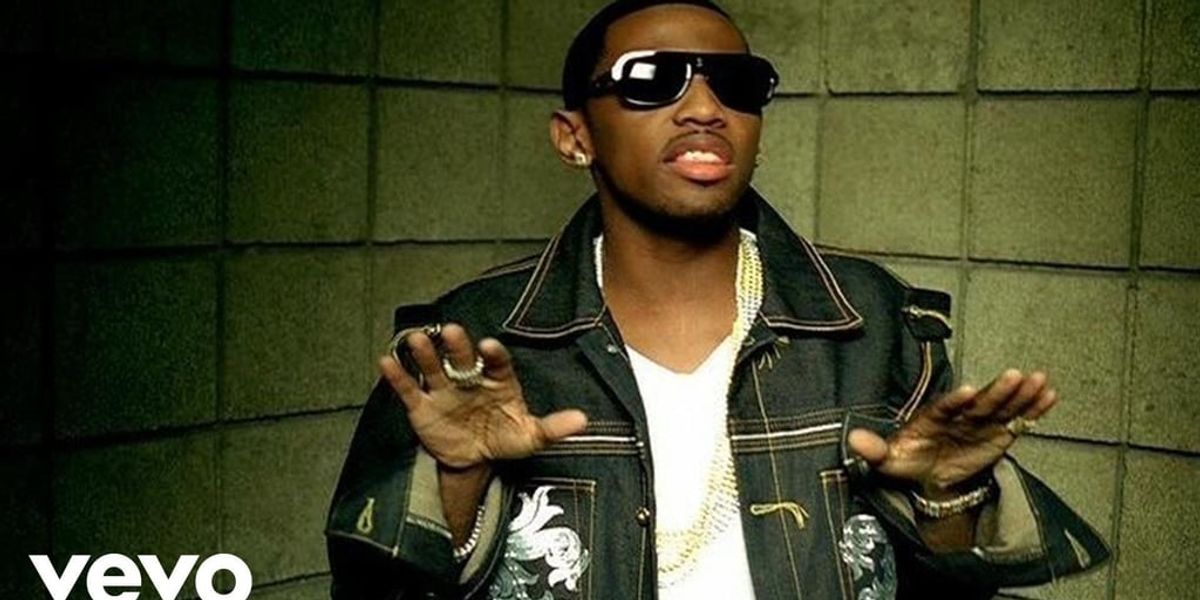
Fabolous is among the best rappers to ever grace the microphone.
Criticism has undoubtedly trailed the rapper over the years. His quality has fluctuated at times, and his sound can be seen as dated. But when Fab has set all the B.S. aside and just rapped, he’s shown himself to be one of the best rappers alive time and time again. In honor of his 43rd birthday, here are six tracks that demonstrate the timelessness of Fabolous.
One Day
When Fab woke up on the day of his debut, he was soon told that all his press and promotion had been canceled. Fab was furious. A mixtape authority in his own right, crafting his debut, Ghetto Fabolous, was an arduous task. He initially joined Interscope alongside DJ Clue, an experience that bore little fruit in terms of credibility.
The label used Fab’s own budget to pay Lil Wayne $100,000 and four bottles of Cristal in exchange for a guest feature, to which the New Orleans rapper showed up for “15 minutes, laid down a verse, grabbed the bottles of Cristal, and left without as much as acknowledging Fab.”
Clue and Fab soon left Interscope, signed a distribution deal with Elektra Records, and soon after that met Lil Mo’. “Superwoman Pt. 2” was released and topped the Billboard Hot 100 at number 11. Genuine buzz began to build around Fab and his debut–which was set for September 11. Word then spread that Jay-Z planned to release his now-iconic album, The Blueprint, on the same day, another hurdle the young emcee had to navigate to establish himself. Then, 9/11 happened.
Needless to say, Ghetto Fabolous‘s deeper cuts, like “One Day,” didn’t garner the support they deserved. Fab found that the best way to win the charts in that moment was to embrace the commercial R&B and rap formula, with hits like “Can’t Deny It” and “Take You Home” finding modest success thanks to slick hooks from Lil Mo’ and the late Nate Dogg.
But “One Day” is a moment of reflection. Across light drums and lucid piano trills, Fab merely tells his story, and the track serves as a testament to the lasting power of Fabolous that came against all odds. “In my road to life, I done jumped in and outta 3, 4 lanes, I’m still here,” he raps.
For The Love
To delve into mixtape Fabolous is to get lost down a nearly inescapable rabbit hole. The There Is No Competition series, the Summer Shootout series, and of course, the S.O.U.L. Tape series make for an endless stream of music that, frankly, has fluctuated in quality over the years.
But the mixtape arena was also where Fab truly thrived when given the space to let loose. He was never a commercial rapper. Early on, he was initially touted as a lyrical New York boxer by the legendary DJ Clue, who relied on Fab’s quick wit and effortless machismo to establish Desert Storm Records as a force to be reckoned with.
Like I said, to really dive into Fab’s mixtapes is to enter a wormhole and never return, but there was always something different about S.O.U.L. Tape 2. Lil Mo’s presence was undoubtedly missed, but there were glistening moments of transparency sprinkled across the tape, because Fab was given the space to just rap. “For the Love” feels like a well deserved exhale, with Fabolous basking in the sun, describing his bars as a “Kit Kat of some well deserved real sh*t.”
I Miss My Love
The epic closure on what remains one of Fab’s most focused and consistent albums, “I Miss My Love” is an eerie love story focused around a seductive young woman that lures Fab back into the drug game. The rapper’s minimal effort, stream-of-consciousness flow is gripping from the jump, as Fab takes us through the slow-burning saga that moves with the unsettling pacing of a Scorcese gangster flick.
By the track’s climactic end, Fab discovers that the very same woman that got him deeply re-invested in drug dealing a year ago is also selling him out to the feds. So he painfully decides to kill her so he can keep himself out of prison. It’s a haunting street anthem that showed Fab’s uncanny knack for narrative raps.
Make Me Better
In the early aughts, no one was quite the master of the R&B/rap commercial anthems quite like Fab. On “Make Me Better,” the Brooklyn emcee and Ne-Yo are a match made in heaven. Over a swirl of strings and vivacious drums, the two compliment each other’s best qualities and transformed “Make Me Better” into a commercial success, at one point everyone’s MySpace profile song.
Change You or Change Me
In another narrative piece done over harrowing piano keys, Fab once again is cruising comfortably in his lane on “Change You or Change Me.” While Fab’s sophomore effort was tepid across the board (he leaned a little too heavily on the R&B/rap formula), “Change You or Change Me” was one of the few offerings that stood out, merely because it found the NY rapper doing what he does best: dropping genuine rhymes and slick wordplay, reaffirming that he’s still the same valiant battle rapper.
“This game ain’t change me, so don’t let it change you,” he raps on the song’s hook. Street Dreams was bloated, and undoubtedly curated for mainstream audiences, a trend that he’s continued to lean on with moderate success over the years, but Fab’s best moments are always when he breaks the mold and speaks to the people, making “Change You Or Change Me” a street anthem in its own right.
[shortcode-01-02B3-go-to-responsive
Cinnamon Apple
While it wasn’t clear in his early days, Fabolous always possessed a great sense of humor, and he leans fully into the silliness of “Cinnamon Apple” alongside Kevin Hart as he reminisces about a teenage love affair gone awry.
Fab always had a knack for regurgitating pop culture references into witty bars, an antic that may have played into his inevitable datedness, but one that for a while kept him afloat in a changing rap climate via The S.O.U.L. Tape‘s and others.
“Cinamon Apple” itself is based on a silly viral video, but Fab attacks the beat with the same introspective tone, making for some unintentionally hilarious lines like, “She had ass though, I mean for her age or whatever / she wore my ring sometimes like we engaged or whatever / and this the ‘No, you hang up first’ dial tone era.”


 44
44